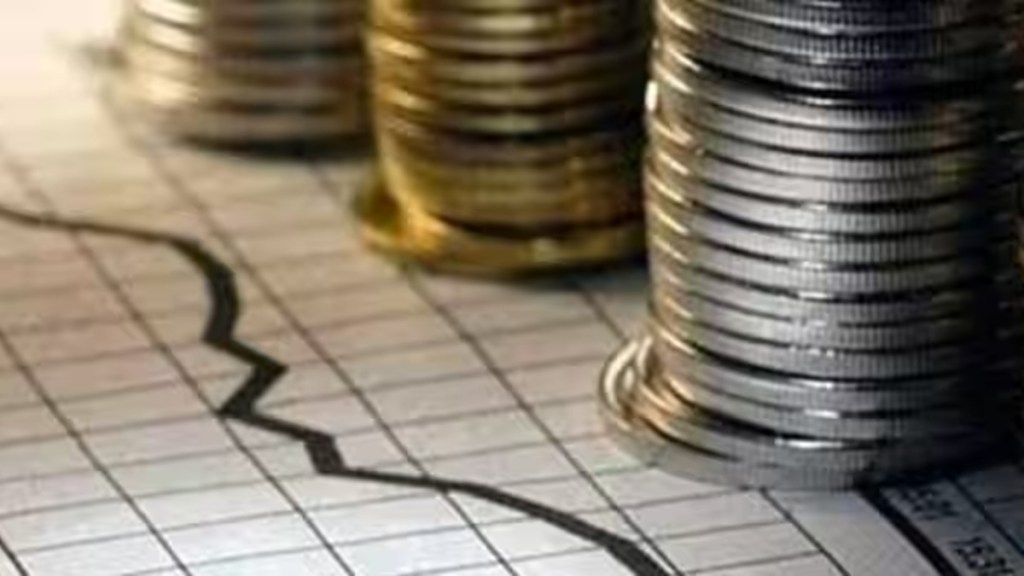The Q1 GDP for India has come in at 7.8 per cent compared to a growth of 6.1 per cent in the previous January-March quarter of FY23 as per data released by the National Statistical Office (NSO), Ministry of Statistics and Programme Implementation. The GDP numbers came in line with most street estimates and close to RBI’s estimates of 8 per cent for Q1.
Trade, hotel, transport, communication and services related to broadcasting coupled with financial, real estate and professional services contributed the most to the growth. The infrastructure output expanded 8 per cent year-on-year in July, lower than the 8.2 per cent mark registered in June.
However, going forward, RBI’s projection for Q2 indicates growth to taper off to 6.5 per cent and maintain the 6 per cent level even in Q3. Q4, as per the RBI projection is likely to take the maximum hit with the Central Bank estimating a 5.7 per cent reading with risks broadly balanced. Real GDP growth for Q1:2024-25 is projected at 6.6 per cent by RBI. Ranen Banerjee, Partner, Economic Advisory Services, PwC India, said, “The achievement of the forecasted 6.5 per cent annual growth in GDP for FY24 is likely to be challenging with a driest August and a likely dry September. This is likely to impact not only the yields from standing crops but also the winter harvest. The global headwinds are getting stronger and the private consumption moderation is also likely to put downward pressure on growth momentum.”
Reacting on the same, Dharmakirti Joshi, Chief Economist, CRISIL, said, “GDP growth at 7.8 per cent in the April-June quarter was hardly a surprise. Most indicators, particularly the government frontloading its aggressive investment target for the current fiscal, were hinting at it. This is likely to be the peak growth performance for this fiscal.” Further, talking about the growth prospects, he added, “Growth in the July-September quarter will be moderated by softening consumption as spiking inflation will dent discretionary-spending power. For the rest of the year, headwinds from slowing global growth and the lagged impact of interest rate hikes will play out. Additionally, if dry weather conditions seen in August continue in September, agricultural output could be impacted. That said, our current forecast of 6 per cent GDP growth for this fiscal would make India the fastest-growing G-20 country this year.”
Rumki Majumdar, Economist, Deloitte India, said, “Contraction in exports after eight quarters of double-digit growth is a concern. Going forward, a global slowdown will likely keep exports down and the government will be prudent in its spending to ensure it adheres to fiscal consolidation. Clearly, India will have to rely on domestic demand growth and private consumption and investment spending will be key to growth sustainability. The upcoming festive demand in the coming months stretching all the way till November and year-end upbeat will further help boost spending.”
Talking about factors that facilitated growth, Rumki Majumdar said, “GVA growth of 7.8 per cent was supported by strong momentum in services of 10.3 per cent YoY backed by consumer spending channeled into services such as the real-estate and trade and transport sectors. This trend is likely to continue driving growth in the sector. Manufacturing activities were sustained while construction activities revved up. This should drive private investment up.”
Ranen Banerjee said, “The lower input prices owing to softer commodity prices, lesser disruption in mining owing to drier June, continued momentum in services, front loading of capex by government and a lower negative entry from the net exports have contributed to the relatively strong print.”
Economists opined that a supportive base along with the favourable demand conditions aided the growth numbers. “From the supply side, services remained the key support pillar while strength in construction and manufacturing also contributed. On the demand side, the pick-up in private consumption was a positive development whereas investment demand remained strong supported by public capex,” said Rajani Sinha, Chief Economist, CareEdge Ratings.
Going forward, Rajani Sinha added, uncertain weather conditions pose the greatest risk to agricultural production and hence to the economic growth outlook. “High food inflation for a prolonged period could weigh on consumption growth. Frontloading of government capital expenditure has supported investment demand so far. However, amid evolving conditions, private capex will have to match up the pace to sustain growth momentum. We maintain our FY24 GDP growth forecast at 6.5 per cent with risks tilted to the downside,” she said.
Meanwhile, Anshuman Magazine, Chairman & CEO – India, South-East Asia, Middle East & Africa, CBRE, said, “India’s GDP growth of 7.8 per cent in Q1 2023-24, the highest in four quarters, showcases a notable economic performance, reflecting the economy’s resilience despite various challenges. The robust growth in the services sector, higher capital expenditure, strong consumption demand, and the resurgence in manufacturing activity stand out as key drivers, underscoring the adaptability of our industries.”

